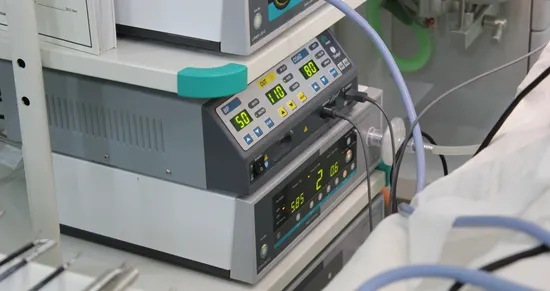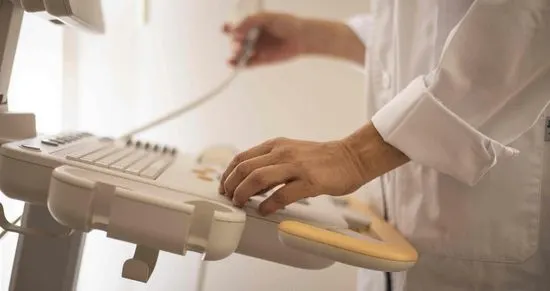Accelerated Aging testing is a process of putting packaged products into a chamber, elevating the test temperature to claim a specific expiration date for a medical device product or package. ASTM-F1980 is meant for sterile medical packaging but many companies and or organizations have been using it to claim specific expiration dates for their products.
Accelerated stability studies are used to calculate a product’s expiry date or life period rapidly when there is no real-time data available.
An accelerated ageing testing for medical devices is used to simulate real time shelf-life ageing, in order to validate shelf-life claims. This process is carried out according to guidelines given in ASTM F1980 – Standard Guide for Accelerated Ageing of Sterile Medical Device Packages.
Accelerated Aging Vs Real-Time Aging
| Aspect | Accelerated Aging | Real-Time Aging |
| Purpose | Predict long-term product stability in a shorter time | Confirm product stability over actual shelf life |
| Testing Conditions | Elevated temperature and sometimes humidity | Standard storage conditions (e.g., room temperature, ambient humidity) |
| Timeframe | Shortened (e.g., weeks to months) | Full product shelf life (e.g., 1–5 years) |
| Basis | Arrhenius equation (temperature accelerates chemical reactions) | Required for long-term validation and regulatory support |
| Regulatory Acceptance | Accepted for initial shelf-life claims (with proper justification) | Required for long-term validation and regulatory support |
| Cost and Resources | Lower long-term cost; faster results | Higher cost due to long duration and storage needs |
| Reliability | Predictive but dependent on assumptions and proper modeling | Highly reliable as it reflects actual product behavior |
| Standard Guidance | Follows ASTM F1980 and similar standards | Based on internal protocols and long-term observation |
| Common Practice | Used for rapid market entry and packaging validation | Conducted in parallel to confirm accelerated aging data |
Both methods are essential: accelerated aging provides fast, predictive data, while real-time aging ensures long-term product safety and compliance.
Key Benefits of Accelerated Aging Testing
Accelerated aging testing is a valuable process for medical device manufacturers aiming to predict a product’s shelf life without waiting years for real-time results. This method simulates long-term storage conditions by exposing products to elevated temperatures, helping estimate how packaging and materials will hold up over time. One of the primary benefits is faster market entry, as the Accelerated Aging test method allows companies to justify shelf-life claims early in development. It also helps identify packaging or material issues before full-scale production, supporting better product design and compliance with standards like ASTM F1980 and ISO 11607.
For medical devices, this testing ensures product stability, particularly for sterile devices where packaging integrity is critical. While real-time aging is still necessary for regulatory validation, accelerated aging offers predictive insights that help manufacturers make timely, informed decisions.
When to use it?
Primarily medical device manufacturers will use accelerated aging testing in their package validation to be in compliance with ISO 11607.
How does it work?
ASTM-F1980 is the document; the theory itself is the Q10 theory. For every 10 degree increase it doubles the reaction rate of the materials. This Q10 factor came from the food industry. This is not an exact science but the FDA allows you to use this theory to get your products to market faster. But you will need to follow it up with real time aging. In doing so, you want to have conclusive evidence that you are not going to have issues with your package or product for that specific shelf life.
How you calculate shelf life of medical device?
For calculation of shelf life of medical device by conducting accelerated aging testing shelf life study.
FACTOR (F):2
[TAA-TRT/10]
Where TAA = Accelerated aging temperature
TRT = Ambient temperature.
Shelf life = Study time period x Factor
Can you use any temperature for AA?
You need to understand where the softening or melting point is before you can pick a test temperature that is going to work properly. Accelerated aging is meant for homogeneous materials while medical devices are comprised of multiple materials can lead to trouble.
Validation studies for ISO 11607 compliance should also cover packaging processes including sterile barrier system forming and sealing.
ASTM F1980 procedure for accelerated aging testing is comprised of the following:
- Select the Q10 value.
- Define the desired shelf life of the package (marketing and product needs, etc.).
- Define aging test time intervals (including time zero).
- Define test conditions, room temperature (TRT), and accelerated aging temperature (TAA).
- Use the Q10, TRT, and TAA to calculate the test duration.
- Define package material properties, seal strength and integrity tests, sample sizes, and acceptance criteria.
- Age samples at TAA. In parallel, age samples at real-life aging conditions (TRT).
- Evaluate the package performance after accelerated aging study relative to the initial package requirements.
Why is Medical Device Accelerated Aging Important?
Accelerated aging is crucial in the medical device industry as it allows manufacturers to predict a product’s shelf life and stability in a much shorter timeframe. By exposing the device to elevated temperatures and environmental stress, accelerated aging simulates the effects of time, helping determine how the product will perform over its intended shelf life. This is especially important for sterile or degradable products where material integrity and packaging must be maintained to ensure patient safety. Accelerated aging supports faster regulatory submissions and market entry by providing early data on product durability and performance. It is commonly used during product development and prior to product launch, enabling manufacturers to make timely decisions about packaging, labeling, and expiration dating. Although real-time aging is eventually required for final validation, accelerated aging offers a valuable, predictive tool that helps ensure quality and compliance while reducing time to market.
Annexes IX to XI of (EU) 2017/745 Medical Devices Regulation (MDR)
For more detail on the information contact us.






